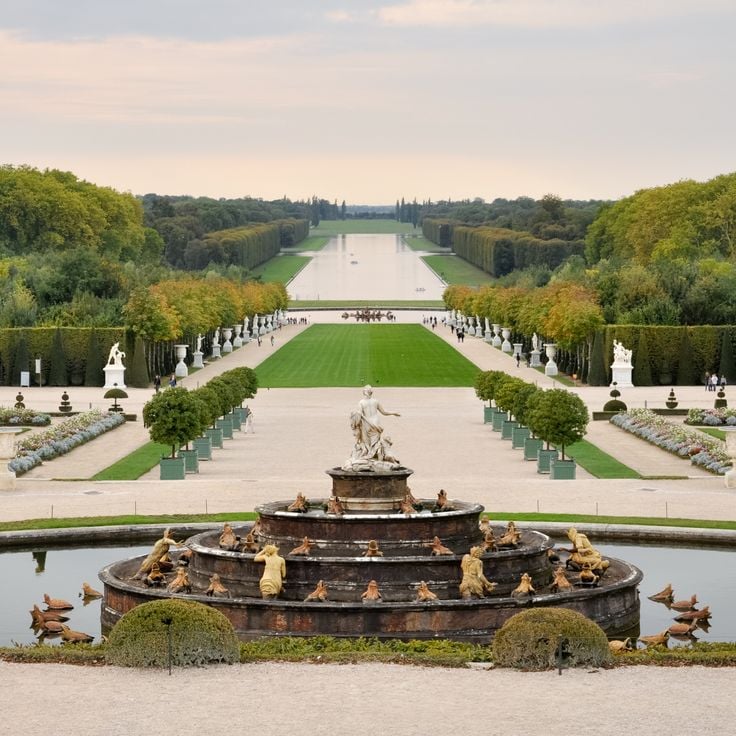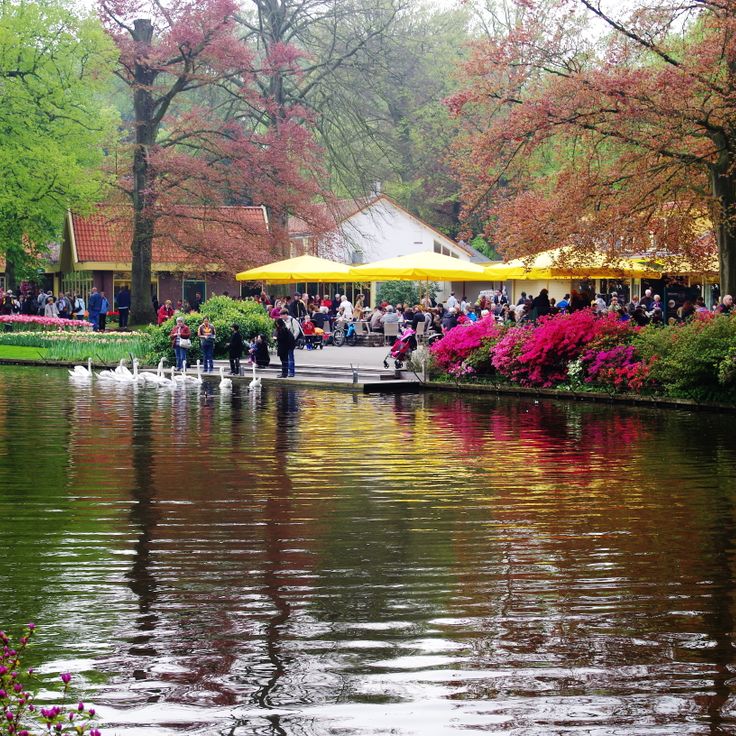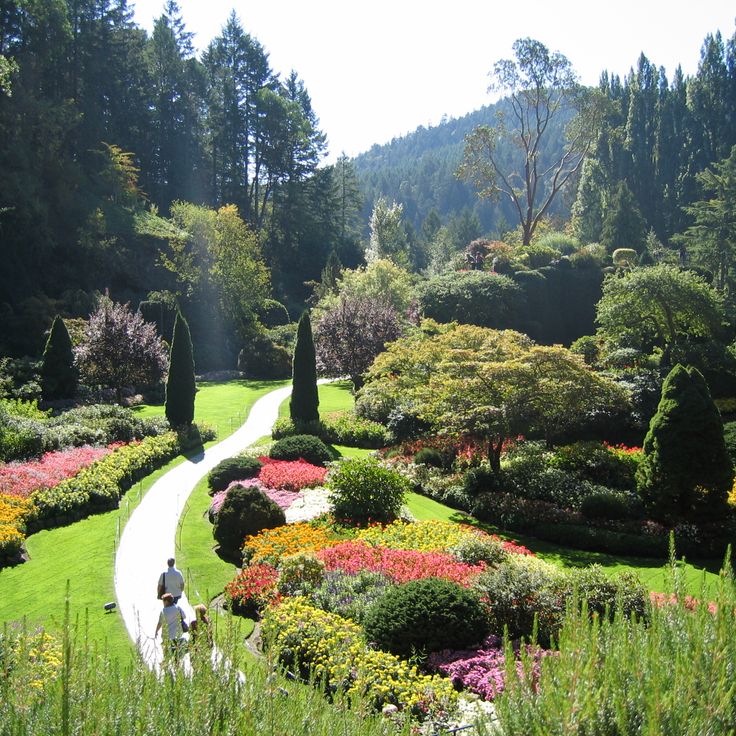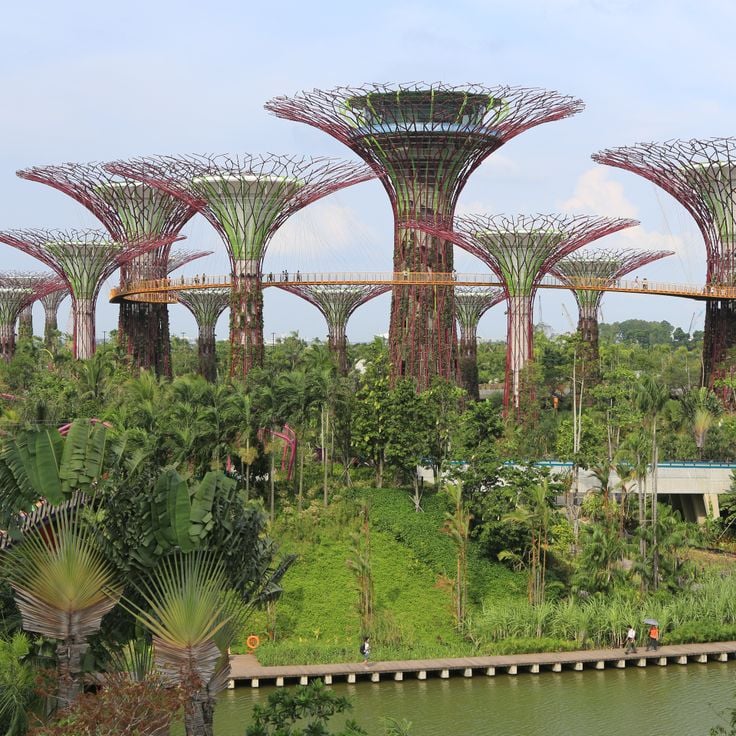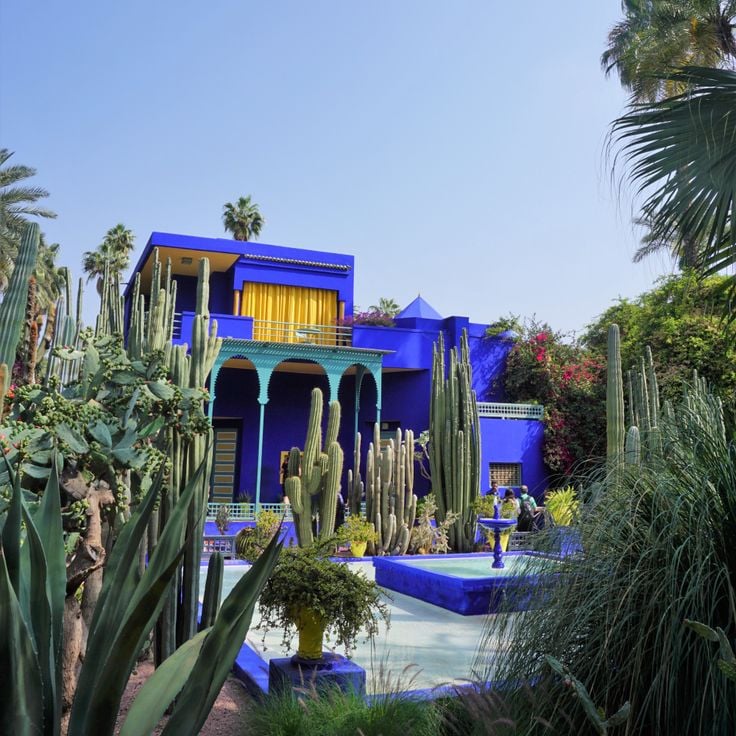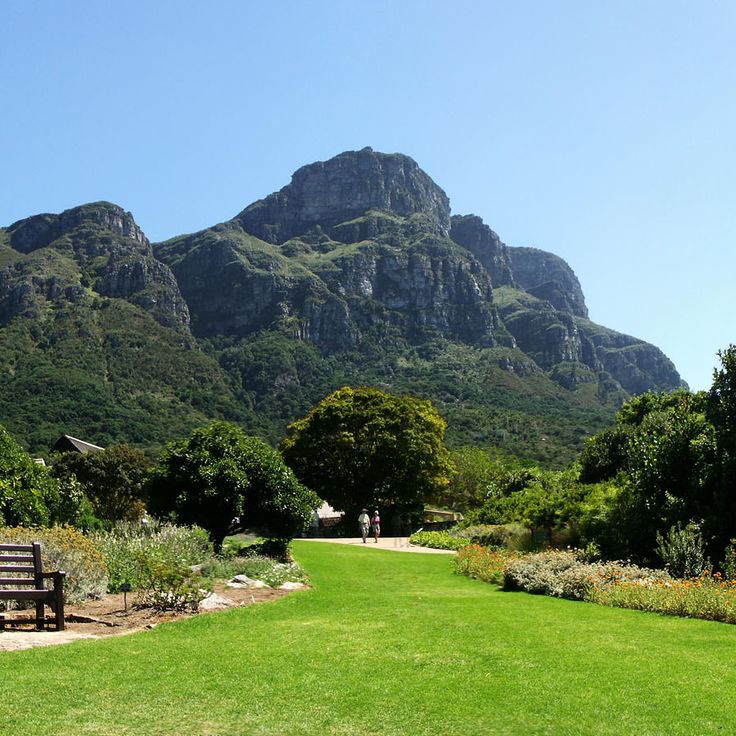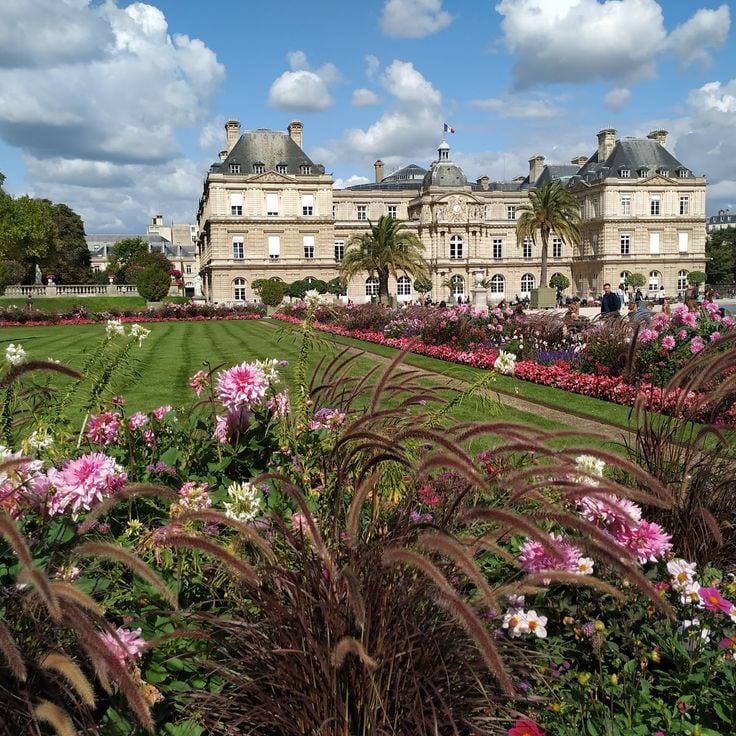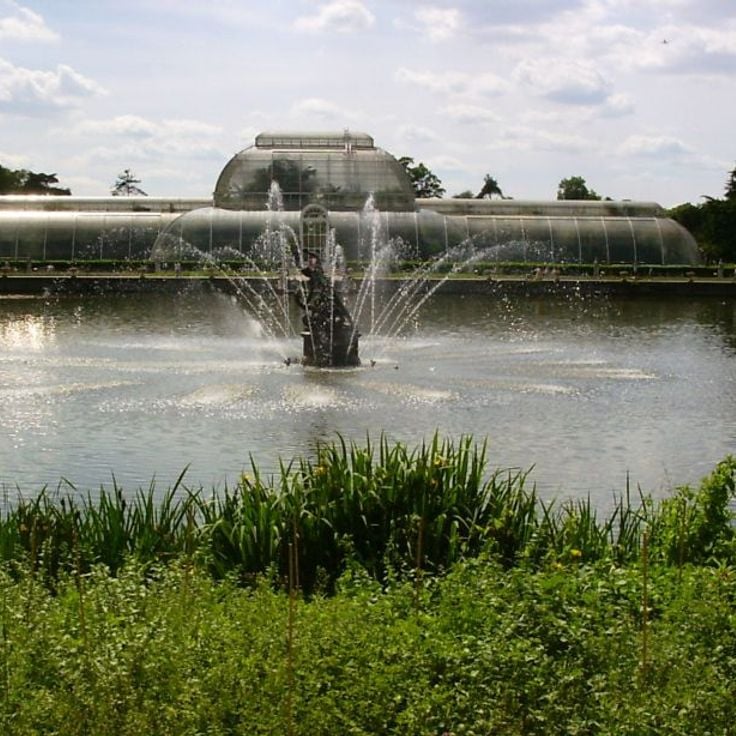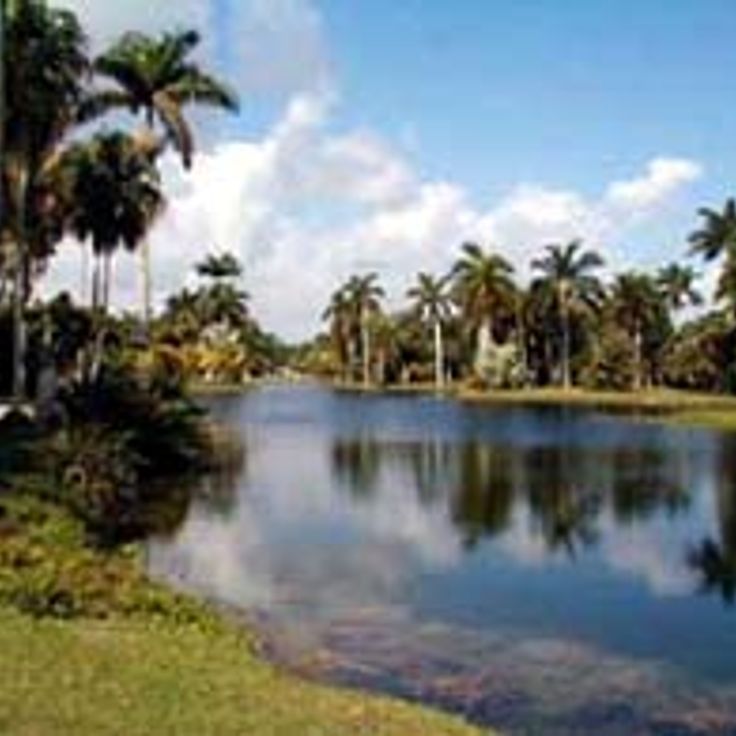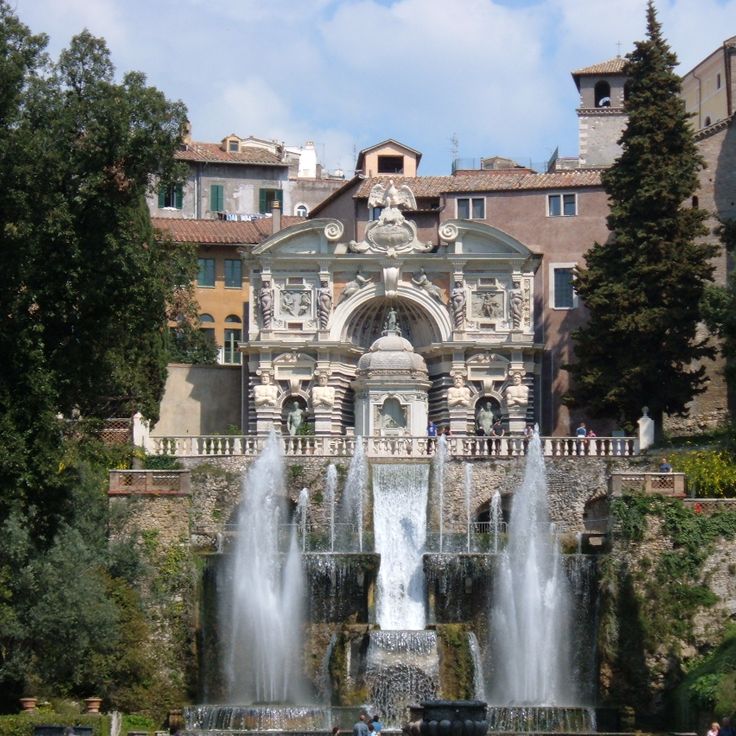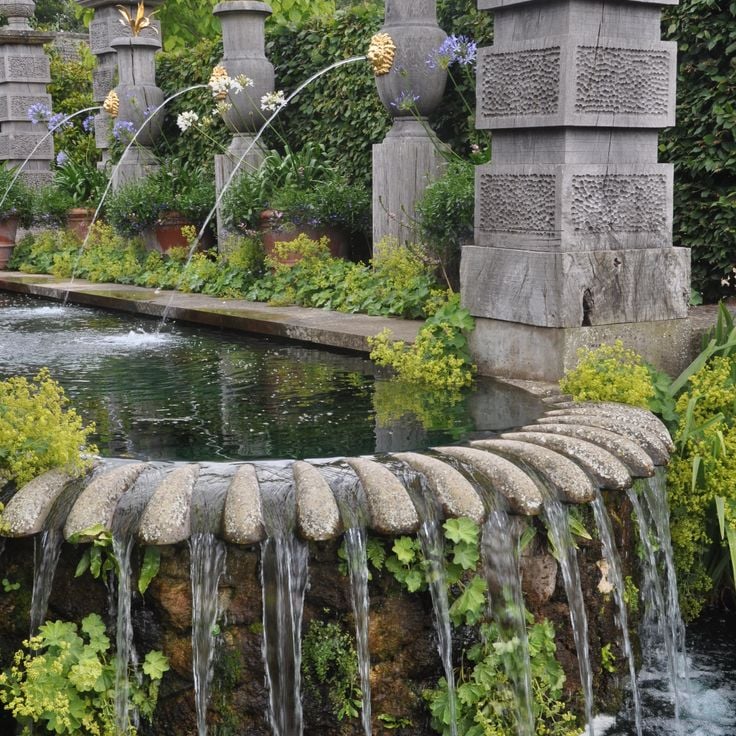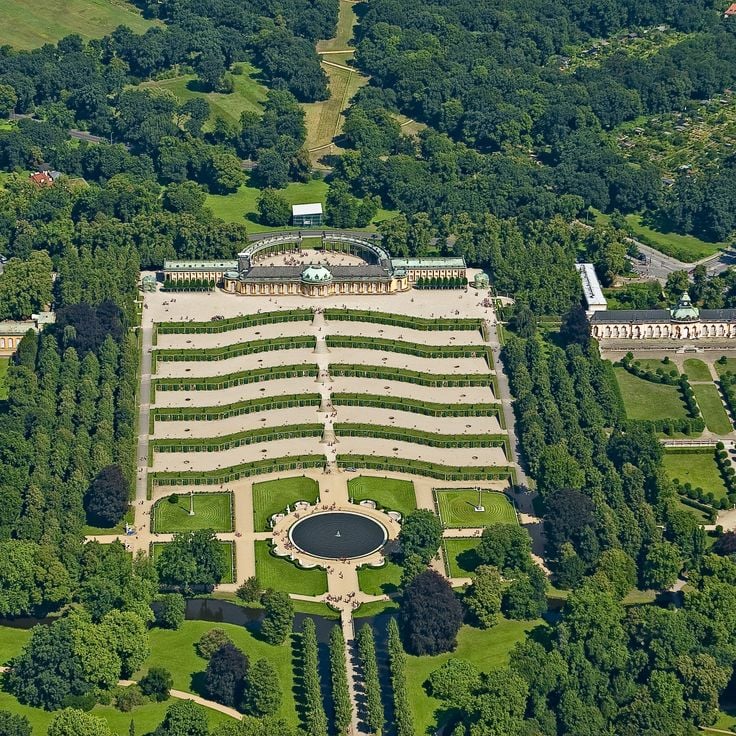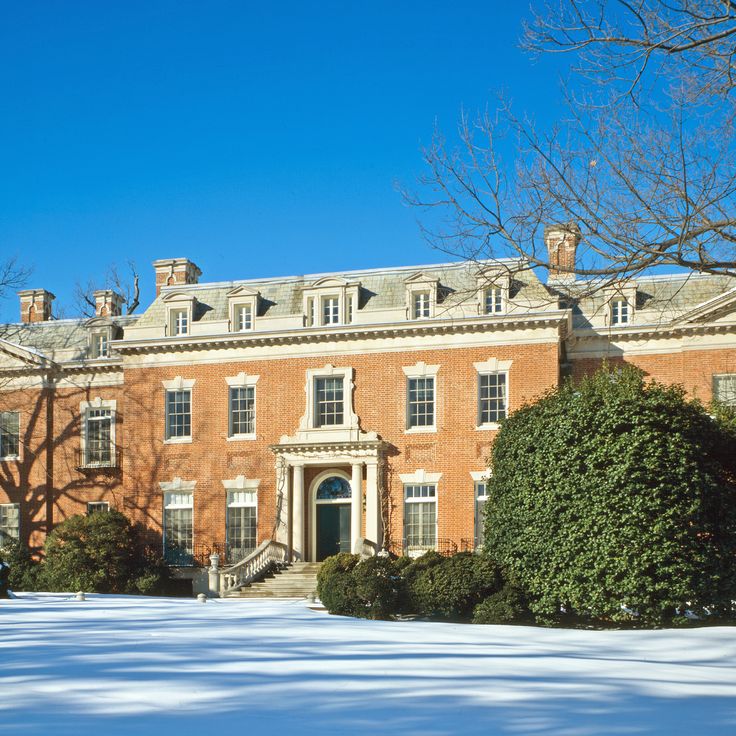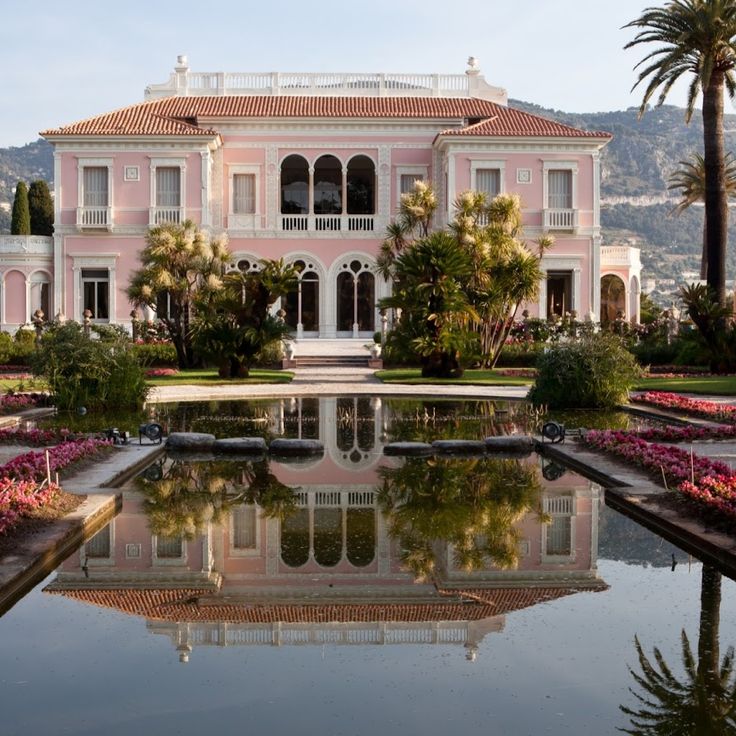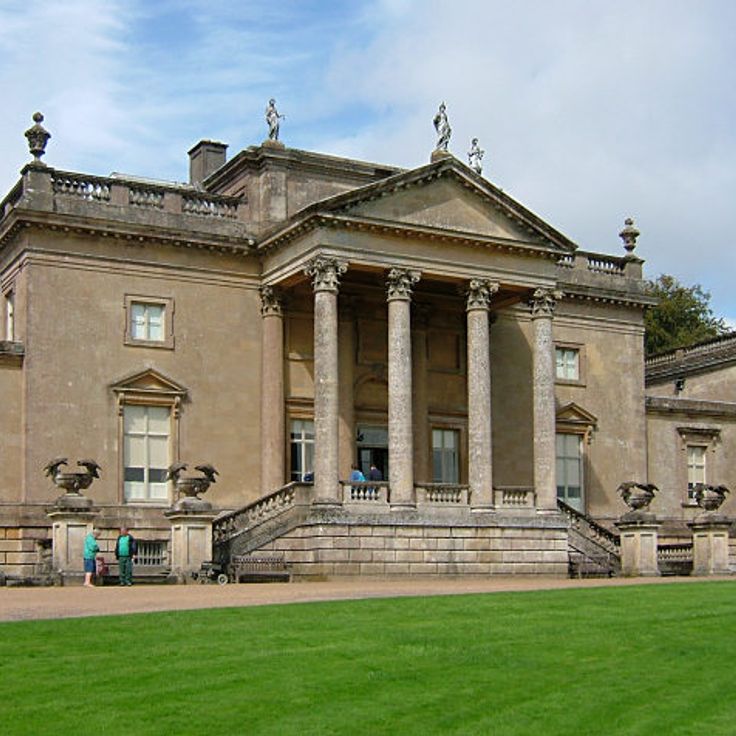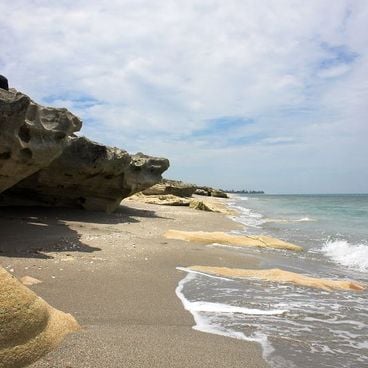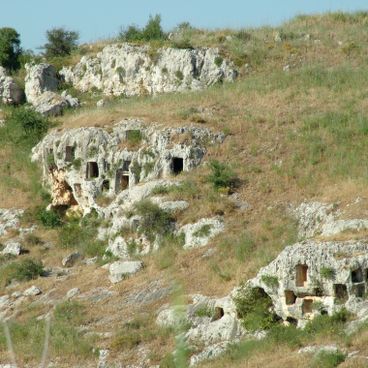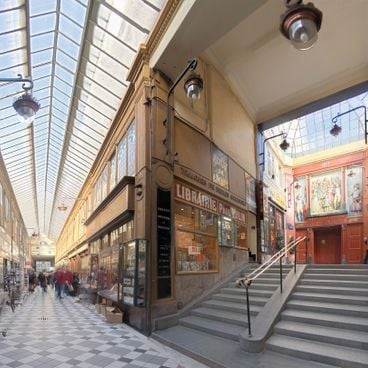This collection features gardens across all continents, illustrating the diversity of world flora and landscape art across eras. It includes European formal gardens, such as those of Versailles with their geometric perspectives and fountains, as well as contemporary creations like Gardens by the Bay in Singapore with its futuristic structures. Scientific botanical gardens coexist with areas dedicated to seasonal blooms, like Keukenhof in the Netherlands with its millions of spring tulips. Each site reflects its natural environment and cultural heritage. The Kirstenbosch National Botanical Garden displays over 7,000 species of South African flora, while the Jardin Majorelle in Marrakech combines exotic plants with colorful architecture typical of the Maghreb. Urban gardens such as those in Luxembourg, Paris, and Brooklyn, New York, demonstrate how these green spaces enhance city life. The selection also includes several UNESCO World Heritage sites, acknowledging their recognized historical and botanical significance worldwide.
The Gardens of Versailles cover 1976 acres (800 hectares) and demonstrate French formal garden design from the 17th century. The layout includes geometric lawns, water basins with fountains, sculptures from the royal collection, and symmetrical flower beds. The hydraulic system supplies over 50 fountains, and the Orangery houses Mediterranean plants. The design follows André Le Nôtre's principles with central axes extending from the palace, structured by tree-lined alleys, water features, and ornamental parterres.
The Keukenhof Gardens present approximately 7 million spring flowers across 79 acres (32 hectares), including tulips, daffodils, and hyacinths. Each spring, these plantings transform the grounds into a display of Dutch flower cultivation traditions. The gardens were established in 1949 on the site of a historic kitchen garden and showcase rotating arrangements of various bulb species. Over thirty gardeners design new themed areas annually with different varieties and color combinations. The grounds include several pavilions hosting flower exhibitions, along with water features and tree plantings that provide structure to the flowering areas.
The Jardin RHS Wisley is a 240-acre (97-hectare) garden operated by the Royal Horticultural Society, combining scientific plant collections with themed display areas. The garden features alpine plantings, rose gardens, an orchard, and specialized collections that support horticultural research and education. The site serves as a trial ground for testing new varieties and cultivation methods, showcasing different gardening styles from formal to naturalistic approaches. As the flagship garden of the Royal Horticultural Society, this location brings together botanical diversity with practical demonstration gardens for visitors and professionals.
Brooklyn Botanic Garden spans 21 acres (8.5 hectares) in the metropolis and divides into specialized areas representing different botanical and horticultural traditions. The Japanese garden was established as early as 1915 and displays classical elements of East Asian landscape design with ponds, bridges, and carefully arranged plantings. The cherry tree esplanade attracts thousands of visitors each spring when about 200 trees bloom. The rose gardens contain more than a thousand varieties ranging from historical to modern cultivars. Additional sections focus on native flora of the northeastern United States with woodland plants, prairie species, and aquatic vegetation, making this urban garden serve both educational and recreational purposes.
The Butchart Gardens span 50 acres and developed from a former limestone quarry. The site comprises several themed areas, including the Italian Garden, Japanese Garden, Rose Garden, and Mediterranean Garden. The central Sunken Garden occupies the space of the original excavation pit. Gardeners plant about one million bedding plants, perennials, and bulbs annually. The collection includes over 900 plant species that flower across different seasons, from spring blooms like cherry trees and tulips to summer roses and fall dahlias. The grounds sit on the Saanich Inlet north of Victoria.
Gardens by the Bay spans 250 acres (101 hectares) at Marina Bay and combines botanical collections with contemporary landscape architecture. The garden features 18 metallic tree structures ranging from 82 to 164 feet (25 to 50 meters) in height, supporting vertical plant walls and functioning as photovoltaic installations. Two climate-controlled conservatories showcase plant species from different climate zones: the Flower Dome presents Mediterranean and subtropical flora, while the Cloud Forest houses an artificial mountain with vegetation from tropical highland regions. This installation demonstrates the integration of plant life and modern architecture in an urban setting.
This botanical garden displays a collection of cacti, palms, and bamboo surrounded by cobalt blue buildings and yellow and orange pots. The Jardin Majorelle combines flora from different continents with the characteristic color palette of North African architecture. The grounds were created in the 1920s by French painter Jacques Majorelle and later restored by Yves Saint Laurent. The plant collection includes over 300 species from five continents, featuring numerous succulents, tropical plants, and aquatic species. The blue walls and pergolas create a strong contrast with the green vegetation, blending Middle Eastern garden design with European influences.
The Kirstenbosch Botanical Garden extends over 528 hectares (1,300 acres) on the eastern slopes of Table Mountain and presents more than 7000 plant species from the Cape Floristic Region, one of the most diverse floral areas worldwide. The facility combines scientific collections with themed gardens, including the fynbos garden with native species and a section for medicinal plants. The various garden sections follow the natural terrain from the cultivated lower area to the nature reserve on the mountain slopes, while paths lead through multiple climate zones and provide insight into Cape vegetation. The institution participates in conservation programs for endangered South African plants and contributes to documenting regional biodiversity. The garden serves research, education, and as a public recreational space within the Cape Town metropolitan area.
This French garden extends over 57 acres (23 hectares) in central Paris and presents classical landscape architecture with geometrically arranged pathways, flowerbeds, and lawns. The green space was created in the 17th century for Marie de Medici and now serves as a public park with numerous sculptures, the Medici Fountain, and the Luxembourg Palace. The Luxembourg Garden contains an orangery, a rose garden, and orchards that follow French gardening traditions. Visitors find tennis courts, a puppet theater, and playgrounds throughout the historic park grounds.
The Royal Botanic Gardens Kew in Richmond houses more than 50,000 plant species from different climate zones and continents. The 326-acre (132-hectare) site includes several Victorian glasshouses, including the Palm House from 1848 and the Temperate House, which display tropical and subtropical plants. The Treetop Walkway allows visitors to view the vegetation from 59 feet (18 meters) above ground. The gardens serve both scientific research and public education and were designated a UNESCO World Heritage Site in 2003. The collections range from medicinal plants and orchids to economically important species, documenting the botanical diversity of Earth.
The Fairchild Tropical Botanic Garden covers 205 acres (83 hectares) south of Miami and houses one of the most important collections of tropical plants outside the tropics. Founded in 1938, the garden displays more than 3,400 species from the Caribbean, Latin America, Africa, and Southeast Asia. The palm collection includes over 600 different species and ranks among the world's most significant. Specialized areas present cycads, tropical fruits, rainforest vegetation, and threatened species. The Montgomery Botanical Center on the grounds is dedicated to tropical plant research and conservation. The facility combines scientific research with public education and contributes to the protection of global plant diversity.
The gardens of Villa d'Este belong to this collection as a masterpiece of Italian Renaissance garden design from the 16th century. Located in Tivoli, the estate features terraced gardens with approximately 500 water features, including monumental fountains and elaborate cascades. The geometric parterres follow the formal design tradition of this period and combine architectural elements with vegetation. The hydraulic systems use the natural slope of the hillside and demonstrate the technical skill of Renaissance engineers. These gardens illustrate how water architecture and plant arrangements work together to create a unified artistic composition.
The Garden of Cosmic Speculation in Dumfries covers 30 acres (12 hectares) and combines mathematical concepts with landscape design. The site includes geometric structures such as DNA double helices, fractal staircases, and undulating lawns that represent scientific theories from physics and mathematics. Created in 1989, the grounds feature water cascades symbolizing black holes and spiral mounds containing representations of galaxies. The garden was developed through the collaboration between architect Charles Jencks and his wife, landscape architect Maggie Keswick, and illustrates the connection between natural sciences and landscape architecture through concrete spatial interpretations of abstract concepts.
The gardens of Arundel Castle extend over several acres at the foot of the medieval fortifications dating from the 11th century. These historic gardens include vegetable beds, herb plantings, and fruit trees maintained according to traditional methods. The grounds combine productive garden areas with ornamental sections and demonstrate the evolution of English garden design across several centuries. The proximity to the Norman castle walls provides an architectural backdrop for the plantings, which reflect both historic and contemporary cultivation practices.
Sanssouci Park and Palace form an 18th-century ensemble in Prussian Rococo style, commissioned by Frederick the Great as his summer residence. The terraced vineyard descends in 6 levels from the main palace and demonstrates the geometric design principles of Baroque garden art. The grounds include several pavilions, fountains with Baroque water features, and a collection of sculptures based on classical models. The vineyard terraces south of the palace are interrupted by glazed niches that originally served for cultivating figs. As part of this royal garden complex, Sanssouci documents the evolution of European landscape architecture between formal French garden tradition and emerging English landscape design.
Suan Nong Nooch spans 500 hectares (1235 acres) and cultivates more than 15000 plant species from tropical regions. The botanical collection includes numerous palms, orchids, and tropical tree species displayed across themed garden sections. This garden combines scientific botany with Thai landscape architecture, presenting various design styles from formal European layouts to traditional Asian elements. As part of this international garden collection, this botanical garden demonstrates the plant diversity of Southeast Asian flora and contributes to the conservation of tropical species.
The Garden of the Master of Nets from the 12th century combines architecture, water features, and vegetation according to Ming Dynasty design principles. It belongs to the classical gardens of Suzhou and illustrates within this collection the Chinese traditions of garden design, where natural elements and built structures are interwoven. The garden includes ponds, pavilions, and courtyards connected through winding paths and galleries. The layout follows the principle of layered perspectives, with each passage revealing a new view of water and vegetation. The plantings consist of species cultivated in Suzhou gardens for centuries, including lotuses, pines, and bamboo.
The gardens of Powerscourt cover 47 acres (19 hectares) and combine Italian-inspired terraced design with manicured parkland, waterfalls, and pavilions. The formal terraced gardens were laid out in the 19th century and feature geometric flower beds, statuary, and ornamental ponds. Shaded areas with mature trees border open lawns, while water features connect the different levels. The garden sits at the foot of the Wicklow Mountains and integrates architectural elements with the surrounding landscape. Different garden sections showcase varied design styles, including Japanese influences and plant collections from several continents.
The garden at Dumbarton Oaks spans 10 acres (4 hectares) in Georgetown and presents a series of garden rooms designed from 1921 according to plans by landscape architect Beatrix Farrand. The property combines European design principles with American garden culture and includes an amphitheater inspired by Roman theaters, walls covered with grapevines, and several terraces with fountains. The various sections feature collections of roses, peonies, and chrysanthemums as well as a formal garden with boxwood hedges. The estate also houses an important research library and museum of Byzantine and Pre-Columbian art. This combination of garden architecture, botanical collections, and scholarly institution makes Dumbarton Oaks a significant example of early 20th-century American landscape design.
Villa Ephrussi de Rothschild features seven themed gardens combining different design traditions. The French garden extends along the main axis of the villa with geometric beds and fountains. Additional garden areas display Mediterranean, Florentine, Spanish, exotic, Japanese, and Provençal plant collections. A water lily pond and a Temple of Love complete the grounds. The gardens were created between 1905 and 1912 on a property along the Côte d'Azur and combine European garden tradition with exotic plant species from different climate zones.
Stourhead is an 18th-century landscape garden that combines classical architecture with naturalistic design. This garden extends around an artificial lake, along whose shores stand several temples, including a replica of the Roman Pantheon and the Temple of Apollo. The estate was created from 1741 by banker Henry Hoare II and follows the ideals of picturesque landscape design of that era. Winding paths lead through wooded slopes to neoclassical structures that reflect in the water surface. This garden demonstrates the British interpretation of ancient Roman architecture within a designed natural landscape and represents a significant example of the English landscape garden style.
